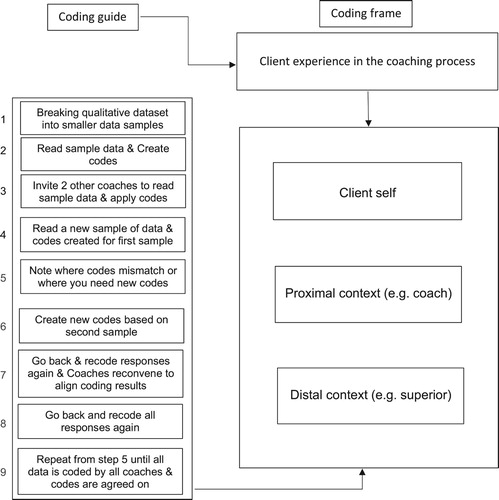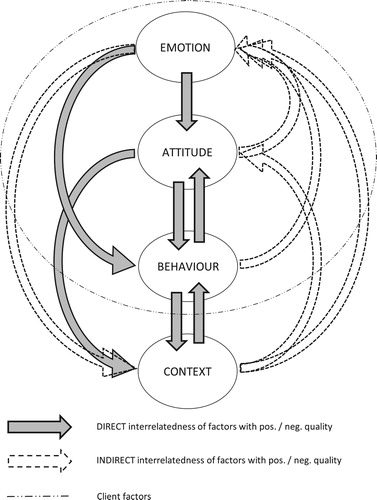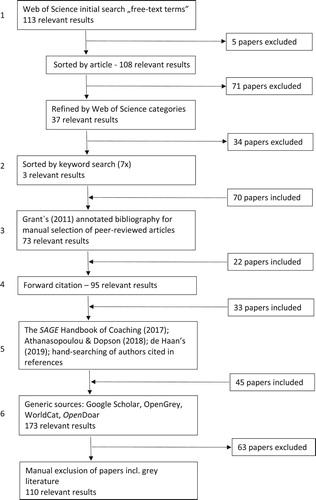Figures & data
Figure 2. Coding guide and coding frames for categorising codes guided by Barry et al. (Citation1999).

Table 1. Summary of primary qualiative study types split by aggregate dimensions & context.
Figure 3. Client factors and embedded in contingencies (based on Grant, Citation2017).

Figure 4. Integrative relationship model of client factors and contextual factors.
Notes: Direct interrelatedness is implied when one factor impacts directly on the other as reported in the studies. Indirect interrelatedness is implied when one factor impacts on another factor via a third factor as reported in the studies. Positive and negative quality of interrelatedness is deducted from descriptors used in verbatim quotes. Constant comparison of direct and indirect as well as positive and negative dimensional dynamics across all study types identified how dimensions (emotion, attitude, behavior and contingencies) are embedded in coaching. A transcending non-linear process reveals patterned shifts for clients in the coaching process as observed in the domain of personality process theory but not yet fully understood and explained in coaching as a socially constructed change process. In analogy to ‘Personality Processes: Mechanisms by which Personality Traits “Get Outside the Skin”’ by S. Hampson (Citation2012), Annual Review of Psychology, 63, 315–339.

Methodology Exhaustive_Supplemental Material
Download MS Word (33.6 KB)Supplemental_Figure 3
Download PDF (149.5 KB)Supplemental_Table 5
Download PDF (37.3 KB)Supplemental_Table 3
Download PDF (182.5 KB)Supplemental_Table 2
Download PDF (233.5 KB)Supplemental_Table 1
Download PDF (35.3 KB)Data availability statement
The authors confirm that the data supporting the findings of this study are available within the article and its supplementary materials. The raw data that support the findings of this study are available from the corresponding author, Tünde Erdös at [email protected], upon reasonable request.

